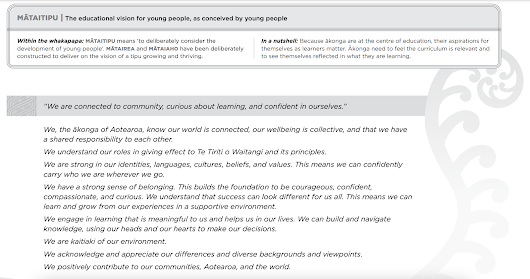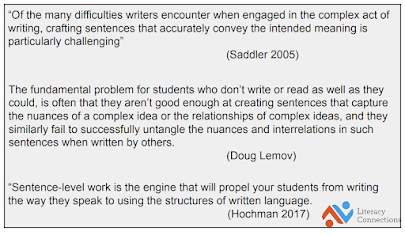Urū Mānuka Teacher Only Day
Noema 2023
Vision for Young People with Pene Abbie
Tumuaki Paparoa Street...not, she's moving on.
Game: Taco, Cat, Goat, Cheese, Pizza
Purpose: To become familiar with Te Mātaiaho. Discussion around Facebook page from the Ministry about intentions for school and kura.
1991 - Roll out of new curriculum documents. Were colour coded and teachers had activities where they used jigsaw puzzle type activties to learn about achievement objectives and content.
2002 - Stocktake of the curriculum introducing the nautilus symbol. Colours again respresent curriculum areas.
2007 - Lots of content in the front end and key competencies, values etc.
2021 - Decision to refresh what we had. Curriculum Refresh Time!! It is the time to do this and to keep tryng for our ākonga. See what is missing and fill the gaps.
For us: Keep our learners at the centre!!
Photo Activity: We all had to bring a photo of a student in our class. I chose Mikayla. We shared why we chose them and although mine was because Joanne had some options for me, it was easy to talk about why I chose Mikayla, particularly about when she did the trust fall at camp and blew me away.
Key Messages and Challenges from Video: This video was about a group of rangatahi talking about their responses to the current curriculum and the vision they helped create for Te Mātaiaho.
Key points I heard:
- Involve young people
- Identity is embraced and accepted
- The voice of young people being heard in order to affect change
- Current one fits one type of person
- Inclusive of additional needs and learners from out of mainstream
- Te Tiriti of Waitangi and how we address and include.
For our young people and their whakapapa, how will they know their connections and what is our responsibility to make these available?
This vision for young people is driving this refresh. How will this look?
We, the ākonga of Aotearoa, know our world is connected, our wellbeing is collective, and that we have
a shared responsibility to each other. This if for the ākonga.
We understand our roles in giving effect to Te Tiriti o Waitangi and its principles. What is this like for a five year old?
We are strong in our identities, languages, cultures, beliefs, and values. This means we can confidently
carry who we are wherever we go. Even if we are living overseas.
We have a strong sense of belonging. This builds the foundation to be courageous, confident,
compassionate, and curious. We understand that success can look different for us all. This means we can
learn and grow from our experiences in a supportive environment.
We engage in learning that is meaningful to us and helps us in our lives. We can build and navigate
knowledge, using our heads and our hearts to make our decisions. What does this look like to a 14 year old boy?
We are kaitiaki of our environment.
We acknowledge and appreciate our differences and diverse backgrounds and viewpoints. How does this look in different places.
We positively contribute to our communities, Aotearoa, and the world.
Walk Around Activity - Pick two random people and move around the space. Keep them in your sight and walk around the room, forming an equilateral triangle. Meet and greet. Good to chat to other kaiako from different schools.
Group Task: Unpacking parts of the vision.
Put the photos of our kids on the big sheet of paper. Using one part of the vision, write three ways is plays out in your classroom. How will learners have this experience? Kahui ako level? What is next?
Good ideas:
Bilingual Buddy Reading
Story Read:

Connections:
Leonie HHS
L...Wigram
Presenting Maths with Kylie (MOE) and Megan Martin
Game: Head and Tails Statement about anxiety about maths starting before school, % of Year 9s who will be math literate, teacher trainees ability to teach Math at Year 7 & 8. (Incorrect heads or tail sits down).
Literacy and Communication and Maths Strategy
Learners enter with different maths skills and experiences, experience bias and discrimination, (Missed the rest of her points...changed the slide too quick).
Learning Areas of Te Mātataio
Q. What is Math? Understanding the world, puzzles, banking, numbers, problem solving, shopping.
Whakatauki - Āno me he whare pūngawerewere Behold, it is like the web of a spider. Discussion: Strong anchor point to hold the web, progressions, not only one way to build a web, can be scary.
Topics and tasks that reflect the identities and cultures of every student.
Changes:
Celebrates what is unique.
Supports ākonga to see themselves in their learning
Clear progreesions...notice , recognise, respond.
Anchors progression with outcomes.
Understand: Big ideas that don't change.Know: Contexts that you look at the big ideas through.
Task. In pairs, we had a series of questions to answer by looking through the
Have a look at the progressions sheet in order to be able to see what should be happening at different year levels so you know what happens before your year level learning can happen.
We looked at the following videos and discussed what we recognise from current practice and what opportunities we could see.
Ka Hikitia Ka Hapaitia with Emma Royal
Came from 2017 tour taking to the community within education to find what is working well for Māori, what needs improving and what next. Tau mai te Reo came from this as did many others. Tau mai te reo is the Māori Language strategy and has it's own mana, for supporting all ākonga in Aotearoa to flourish.
Ka Hikitia is the Māori Education strategy.
Guiding Principles
Excellent outcomes
Belonging
Strengths Based
Productive Partnerships
Te Tiriti o Waitangi
Discussion - What would we see if we saw Māori experiencing success as Māori.
NELPS are same as objectives in Ka Hikitia. They are the same.
1994 First deliberate Māori education strategy.
Outcome Domains:
Task: What are we already doing that is breathing life into Ka Hikitia:
Be deliberate about what we are doing.
Action: To make mihi whakatau part of our school culture and also Māori whānau hui. Create a school haka and waiata.
Pasifika Education Plan with Jason Tiatia
Lead advisor for Pasifika education.
Quiz: Action Plan for Pasifika is over arching, Tapasā document.
Tapasā is a resource that provides a Pacific learner lens to Our Code, Our Standards | Ngā Tikanga Matatika, Ngā Paerewa.
Tapasā – Cultural competencies framework for teachers of Pacific learners
The Tapasā framework brings Pacific perspectives to effective and quality teaching practice at different stages of a teachers’ journey in key areas and transition points for Pacific learners in early learning, primary and secondary education.
81,000 Pasifika students in primary through to secondary and is growing.
There are 5 key shifts in the Education Plan.
Talaono ako - is after school learning. Power Up was previous name. Is also a language app.
Tongan is the second most spoken language in Oamaru.
Pacific students who preside in South Island is 9%.
Pacific Education funding is available to whānau, kura etc.
Know your audience, know your students, know your whānau.
It takes four cups of tea before trust can be built. Relationship is the number one thing to build trust.
Fono = meeting
Talanoa = discussion
Key Shifts
Language -
Confront Systemic Racism -
Enable Every Teacher -
Partner with Families -
Grow, Retain and Value -




































































